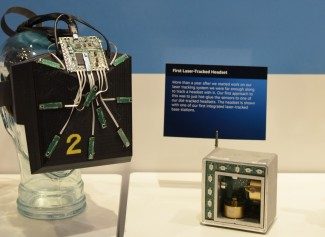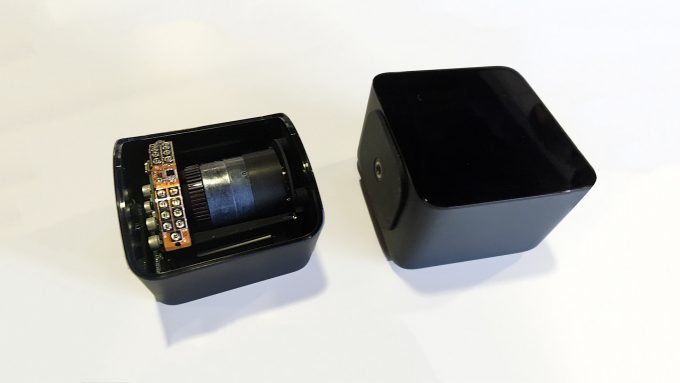As evidenced by the decision to begin selling SteamVR Tracking base stations directly later this year, Valve aims to continue driving development of the technology. A look at the latest engineering sample of the next-generation base station model shows a new design approach that simplifies the device down to a single rotor and enhances tracking.
During a recent media briefing at Valve’s headquarters in Bellevue, WA, the company spoke about their ongoing development of three first-party on VR games, their pragmatic view of the young VR market, and also showed a glimpse of the next-generation SteamVR Tracking (AKA Lighthouse) base stations—the small beacons which form the foundation of the tracking system.
In late 2016, Valve showed a glimpse of an early prototype of the new single-rotor base station which was largely derived from earlier models. At Valve’s media briefing this month, PC Gamer captured a closeup of a much evolved engineering sample (seen heading this article), which Valve’s Joe Ludwig confirmed is “where we’re at right now” in development of the device, though cautioned that “anything about this could change” before it begins shipping later this year.


The simplification from a dual-rotor design to a single-rotor design—which smartly condenses horizontal and vertical laser sweeps into a single sweep—may be more significant than it seems at first glance.
“It’s cheaper, it’s smaller, it’s lighter, less noise, lower power, and we think it will be able to track a little better, have a little better field of view.” said Ludwig, who works closely on Valve’s tracking technology. “Basically the next-generation. Better in every way.”
Indeed, an increased field of view is suggested by the design alone, which has a curved front and LED array (used to flash an invisible syncing light), that could emit light more intensely over a wider area. We’re interested to see how much improvements in the base stations combined with advanced sensors will enhance tracking performance (and reduce cost).
Valve’s Chet Faliszek confirmed today via Twitter that the new SteamVR Tracking base stations will be backwards compatible with existing devices like the HTC Vive, and ostensibly with third-party SteamVR Tracking devices currently in development.
Better tracking and a wider field of view are exciting developments for any VR tracking technology, but Valve says that today’s ‘room-scale’ tracking is just the beginning. The company has in the past said that the technology could support more than two base stations at a time. At the media briefing, Valve president Gabe Newell said that the company expects “house scale” tracking in the future, thanks to the ability to “knit together these [tracking] volumes into an arbitrarily large volume.”
Hat tip to a Road to VR commenter who pointed us to this new closeup photo, and to Valve News Network who posted a full recording of the Valve media briefing.

